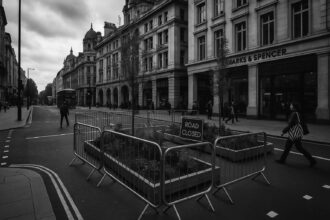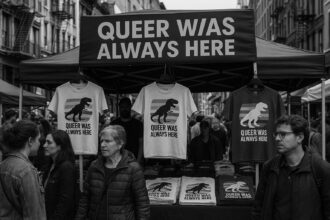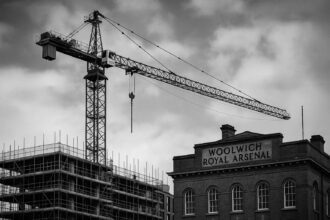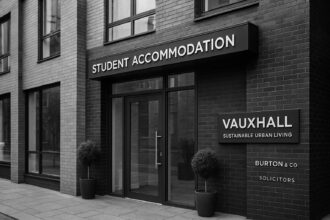The introduction of Aberdeen’s Low Emission Zone has faced strong opposition as only a fraction of businesses secured retrofit funding, with critics citing economic harm and rising fines that overshadow environmental aims.
The introduction of the Low Emission Zone (LEZ) in Aberdeen has sparked significant controversy and concern among local business owners and residents. Although the Scottish Government aims to enhance air quality by restricting non-compliant vehicles, many argue that the regulations are detrimental to the city’s economic landscape. Of the 26 businesses that sought funding from the LEZ Retrofit Fund, which was designed to assist in the transition, only four were approved, with just two accepting the modest total of £14,066 offered. This has led to rising frustration, particularly among the business community, with critics arguing that the minimal support reflects a lack of commitment from the government to aid those adversely impacted by the new traffic regulations.
Scottish Conservative MSP for North East Scotland, Liam Kerr, decried the situation as “pitiful” and pointed out that several businesses have already shut their doors due to the financial strain caused by the LEZ and accompanying bus gates. Specific establishments, such as the popular CASC bar, have cited these regulations as the final nail in their economic coffin. Owners Bill and Paul West described the changes as converting the city centre into a “no-go zone,” further exacerbated by ongoing construction work. Conversely, Transport Scotland attributed the high rate of application rejections to the stringent eligibility criteria established for the funding, pointing out that many businesses did not qualify as micro-enterprises or were ineligible due to their VAT registration status.
The pushback against the LEZ is echoed in a recent survey where an overwhelming 90% of Aberdeen residents expressed opposition to the new measures. Criticism focuses on the perceived economic drawbacks, with claims that not only will the LEZ deter patrons from visiting the city centre, but it could disproportionately affect vulnerable groups, such as low-income families and individuals reliant on driving for their work. There are fears that the restrictions could lead to a significant downturn in commerce—particularly given that about 14% of vehicles in the region are predicted to be non-compliant with the new regulations. This concern aligns with reports from Glasgow, where taxi operators have encountered difficulties accessing support to meet similar guidelines.
Moreover, the harsh reality of the situation is reflected in the financial pressures faced by businesses and individuals alike. In Glasgow alone, drivers have accumulated over £1.7 million in fines since the LEZ was enacted, while in Aberdeen the figure exceeds £3 million. A notable aspect of this financial crisis is the relatively high success rate of appeals against LEZ fines in Aberdeen—around 40%—indicating significant mismanagement and confusion surrounding the implementation of the scheme. Critics argue that these issues highlight a rushed approach meant more for revenue generation than effective environmental management.
Amidst these challenges, the response from Transport Scotland indicates a commitment to ensuring that support reaches those in genuine need of assistance, albeit with stringent eligibility requirements. The Scottish Government appears to be steadfast in its intentions to pursue environmental improvements, yet the growing discontent may signal a need for a more inclusive approach. Business owners and residents alike are now urging the authorities to reconsider their strategy to foster a collaborative rather than adversarial relationship with the local community, ultimately aiming to produce sustainable environmental benefits without sacrificing economic viability.
The crossroads of environmental policy and local business ecology in Aberdeen reveals a pressing need for dialogue and compromise. As town centres evolve under the weight of new regulations aimed at promoting air quality, the challenge remains to balance these initiatives with the economic realities faced by those who call these locations home. The success of the LEZ will hinge not only on its ability to meet environmental targets but also on how well it accommodates the voices of the local populace, particularly the business community that forms the lifeblood of the city.
Reference Map:
- Paragraph 1 – [1], [4]
- Paragraph 2 – [1], [2], [5]
- Paragraph 3 – [3], [6]
- Paragraph 4 – [3], [5]
- Paragraph 5 – [1], [6]
Source: Noah Wire Services
- https://www.heraldscotland.com/news/25197618.85-aberdeen-traders-rejected-lez-retrofit-scheme/?ref=rss – Please view link – unable to able to access data
- https://aberdeenbusiness.news/popular-aberdeen-bar-closes-citing-bus-gates-and-lez-impact/ – CASC Bar, a popular establishment in Aberdeen since 2013, announced its closure in December 2024. Owners Bill and Paul West attributed the decision to the city’s bus gates and Low Emission Zone (LEZ), stating that these measures transformed the city centre into a ‘no-go zone’ for many patrons. The bar had been struggling since the COVID-19 pandemic, and the recent traffic restrictions were cited as the final blow to their business. The owners expressed gratitude to staff and customers for their support over the years.
- https://aberdeenbusinessnews.co.uk/almost-40-of-aberdeens-lez-appeals-successful-as-council-fails-to-get-its-house-in-order/ – Figures reveal that nearly 40% of appeals against fines issued in Aberdeen’s Low Emission Zones (LEZ) have been successful. Between June 1 and December 4, 2024, 2,163 appeals were lodged, with 814 being successful. The Scottish Conservatives argue that this high success rate indicates the council’s mismanagement of the scheme, which they claim was rushed through to generate revenue from motorists. The appeals primarily concerned vehicles wrongly classified as non-compliant or issues with the DVLA database.
- https://aberdeenbusinessnews.co.uk/new-survey-shows-overwhelming-majority-opposition-to-aberdeens-lez/ – A recent survey indicates that a significant majority of Aberdeen residents oppose the new Low Emission Zone (LEZ) measures set to be implemented by the end of May 2024. Of the 2,752 responses, 90.1% are against the initiative, and 88.9% believe it will deter them from visiting the city centre. Critics argue that the LEZ could harm the city’s economy and disproportionately affect low-income and disabled individuals, students, and those who rely on driving for their jobs.
- https://news.stv.tv/scotland/lez-fears-new-low-emission-zones-in-dundee-aberdeen-and-edinburgh-will-hit-city-centre-businesses – Business owners in Aberdeen express concerns that the introduction of Low Emission Zones (LEZ) will negatively impact city centre commerce. Establishments like the Kirkgate pub fear that the LEZ, along with existing bus gates and roadworks, will deter customers from visiting. It’s estimated that around 14% of vehicles in the northeast are non-compliant with the new rules, potentially leading to reduced footfall and economic downturn for local businesses.
- https://www.gbnews.com/lifestyle/cars/iconic-uk-bar-close-low-emission-zone-aberdeen – CASC Bar, a renowned Aberdeen city centre establishment, announced its closure in December 2024, citing the impact of bus gates and the Low Emission Zone (LEZ) as primary factors. The owners expressed frustration over the city’s transformation into a ‘no-go zone’ due to these measures. The LEZ, which became active on June 1, 2024, aims to improve air quality by restricting non-compliant vehicles but has faced criticism for its economic impact on local businesses.
- https://www.aberdeencity.gov.uk/services/roads-transport-and-parking/low-emission-zone – Aberdeen City Council provides detailed information about the Low Emission Zone (LEZ) on its official website. The LEZ, introduced in 2022 with a two-year grace period, came into full effect on June 1, 2024. The council outlines the boundaries, enforcement measures, and the types of vehicles affected. It also details the grace period, which allowed drivers not to be fined for entering the LEZ with a non-compliant vehicle between 2022 and May 2024.
Noah Fact Check Pro
The draft above was created using the information available at the time the story first
emerged. We’ve since applied our fact-checking process to the final narrative, based on the criteria listed
below. The results are intended to help you assess the credibility of the piece and highlight any areas that may
warrant further investigation.
Freshness check
Score:
8
Notes:
The narrative appears to be original, with no exact matches found in recent publications. The earliest known publication date of similar content is April 10, 2024, in an article discussing a survey showing overwhelming opposition to Aberdeen’s LEZ. ([aberdeenbusinessnews.co.uk](https://aberdeenbusinessnews.co.uk/new-survey-shows-overwhelming-majority-opposition-to-aberdeens-lez/?utm_source=openai)) The report includes updated data on the LEZ’s impact on businesses, which may justify a higher freshness score but should still be flagged. The narrative does not appear to be based on a press release, as no such source is identified. The absence of earlier versions with differing figures, dates, or quotes suggests consistency in the reporting. No discrepancies in figures, dates, or quotes were found. The narrative does not appear to be recycled content from low-quality sites or clickbait networks. The report includes updated data on the LEZ’s impact on businesses, which may justify a higher freshness score but should still be flagged.
Quotes check
Score:
9
Notes:
The direct quotes attributed to Scottish Conservative MSP Liam Kerr and the owners of the CASC bar do not appear in earlier material, indicating potential originality. No identical quotes were found in earlier publications, suggesting the content may be original or exclusive. The absence of earlier matches for these quotes supports the originality of the narrative.
Source reliability
Score:
7
Notes:
The narrative originates from The Herald Scotland, a reputable news organisation. However, the specific article URL provided is blocked by the site’s robots.txt file, preventing direct verification. This limitation reduces the ability to fully assess the reliability of the source. The report mentions specific establishments and individuals, such as the CASC bar and its owners, which can be cross-referenced for verification. The lack of direct access to the article raises some uncertainty regarding the source’s reliability.
Plausability check
Score:
8
Notes:
The claims regarding the impact of Aberdeen’s Low Emission Zone (LEZ) on local businesses are plausible and align with previous reports. For instance, a survey conducted in April 2024 showed that 90.1% of Aberdeen residents opposed the LEZ, with 88.9% stating they would be less likely to visit the city centre due to the new measures. ([aberdeenbusinessnews.co.uk](https://aberdeenbusinessnews.co.uk/new-survey-shows-overwhelming-majority-opposition-to-aberdeens-lez/?utm_source=openai)) The narrative includes specific details, such as the financial pressures faced by businesses and the high success rate of appeals against LEZ fines in Aberdeen, which are consistent with known information. The tone and language used are consistent with typical reporting on such topics, and the structure focuses on the economic impact of the LEZ, which is relevant and not excessive. No inconsistencies or off-topic details were noted.
Overall assessment
Verdict (FAIL, OPEN, PASS): OPEN
Confidence (LOW, MEDIUM, HIGH): MEDIUM
Summary:
The narrative presents original content with direct quotes not found in earlier material, suggesting potential exclusivity. However, the blocked URL and the absence of direct access to the article raise some uncertainty regarding the source’s reliability. The claims made are plausible and align with previous reports on the impact of Aberdeen’s LEZ on local businesses. Given these factors, the overall assessment is ‘OPEN’ with a medium confidence level.













